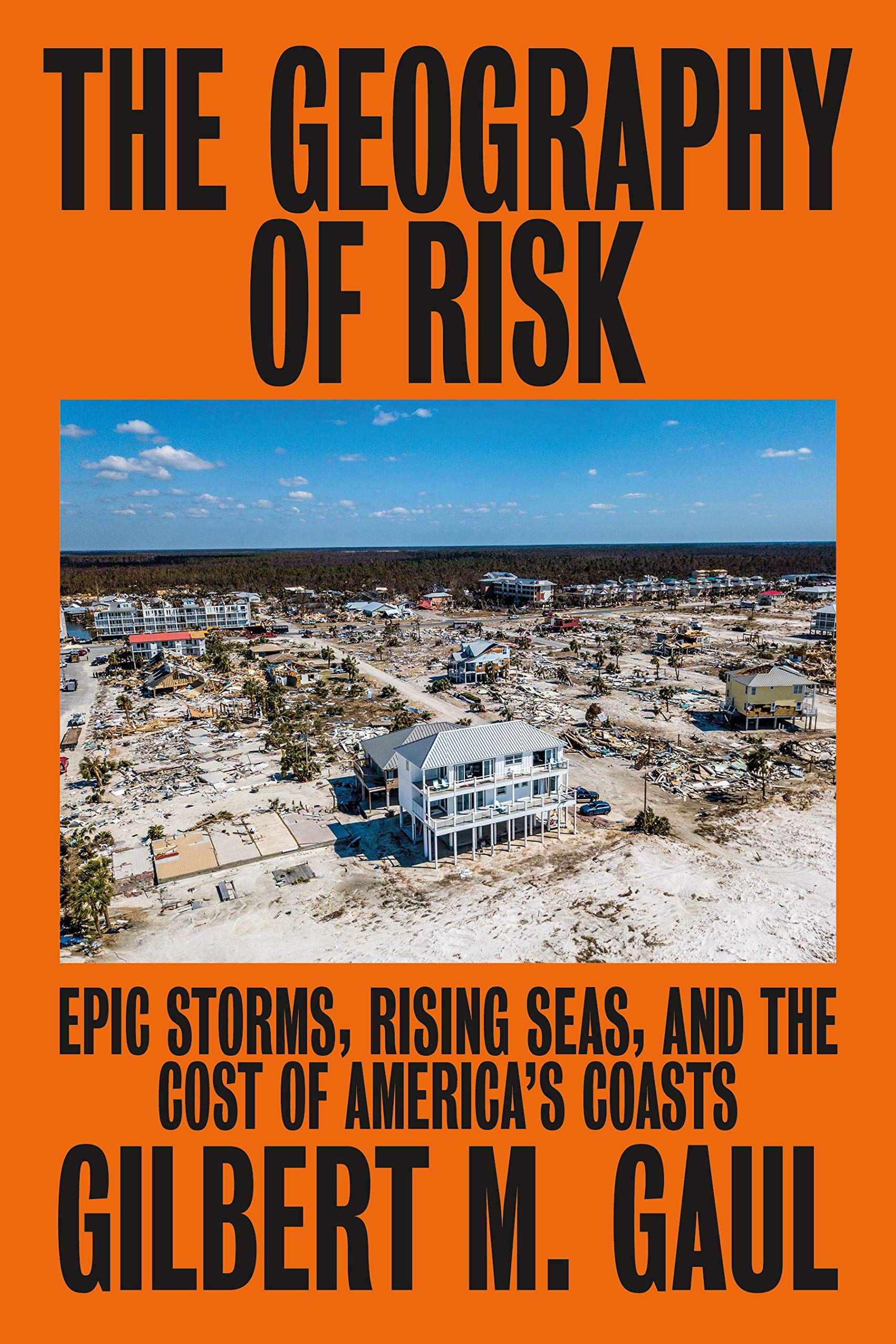You must be logged in to post a review.
The Geography of Risk: Epic Storms, Rising Seas, and the Cost of America’s Coasts
The Geography of Risk from Pulitzer Prize winner Gilbert M. Gaul is a shocking account of our efforts to combat storm damage and the cost to the public and government along the Atlantic and Gulf Coasts. The book succeeds in telling of epic storms, rising seas, and the cost to America’s coast. Each year we are inundated with catastrophic storms that cost billions in damage and in some situations destroy cities, leaving many flooded communities in their wake. Zoning and building decisions have a history of being made by local municipalities, but now the federal government has been paying for a large share of the repairs. The forecasts for the future are very grim and will change the lives of those who remain in coastal communities and cities. Whole areas of cities are forecast to be underwater, and coastal airports might also be gone unless serious efforts are made before the turn of the century. This is not all new news, but the history is covered in depth here.
The book does not focus on solutions to these problems but rather tells what has already transpired. We can learn from this history even without arguments for specific and focused future plans. Gaul argues that these affected areas were bad places to build seaside houses and cities in the first place. The victims of these hurricanes very often choose to stay and rebuild with insurance and government funding. A 2014 report from the National Academy of Sciences titled “Reducing Coastal Risk on the East and Gulf Coast” argued that there is “no central, leading, unified vision” for damage prevention, but maybe someone can find some inspired plans on the web. Acclaimed coastal geologist and author Orrin H. Pilkey has argued that we need to retreat from the coast, and he is not the only one, but for some, that is a difficult proposition. Can cities really buy land elsewhere, build houses, and expect people to migrate? Will such places be close to their jobs? If no one has not fully thought about it yet, maybe we can build houseboats by the coast and in areas where it floods regularly? Damaged houses are usually repaired after the water recedes, and the repairs could involve converting them into houseboats. Some houses which would need a plumbing connection and an anchor could maybe be adapted. Engineers have taken on tougher challenges, and after storms, these buildings need to be repaired anyway.
Gaul’s book does a great job of documenting what has transpired and the jeopardy we are in. Environmental leader Bill McKibben recommended the book. The solutions to this problem will be very costly and require more than vision. It will alter lives. It is not clear what role local municipalities can play in these larger regional problems. Many who call the shore home will not or can not leave it behind, and doubts that a storm of that magnitude will happen locally again leave these problems to future generations. The situation is getting worse and worse, and affected people will be getting angrier and will be more in peril. What is needed next is an exploration of the options on the table.
| Author | Gilbert M. Gaul |
|---|---|
| Star Count | /5 |
| Format | Hard |
| Page Count | 304 pages |
| Publisher | Sarah Crichton Books |
| Publish Date | 2019-09-03 |
| ISBN | 9780374160807 |
| Bookshop.org | Buy this Book |
| Issue | December 2019 |
| Category | Current Events & Politics |
| Share |






Reviews
There are no reviews yet.